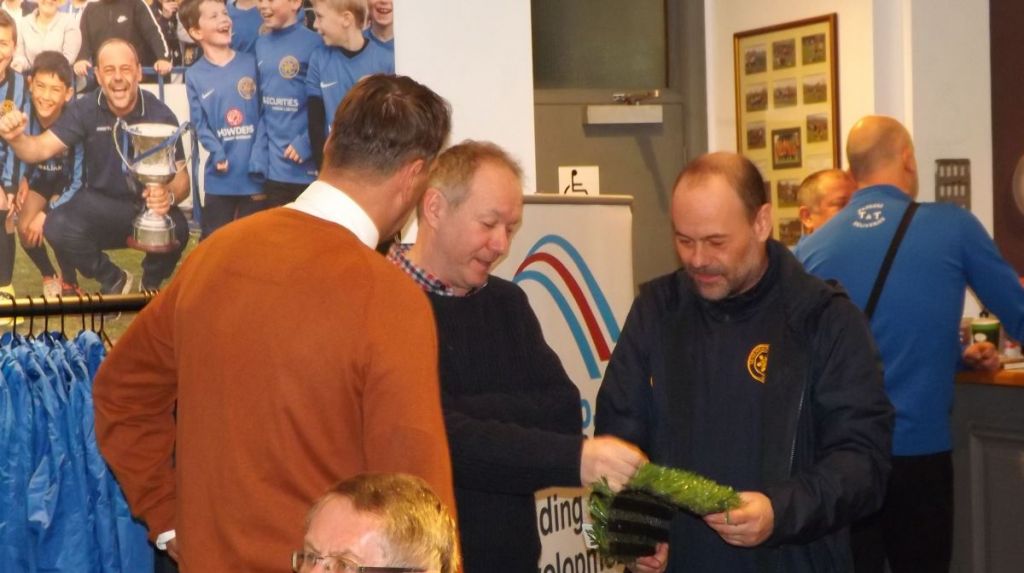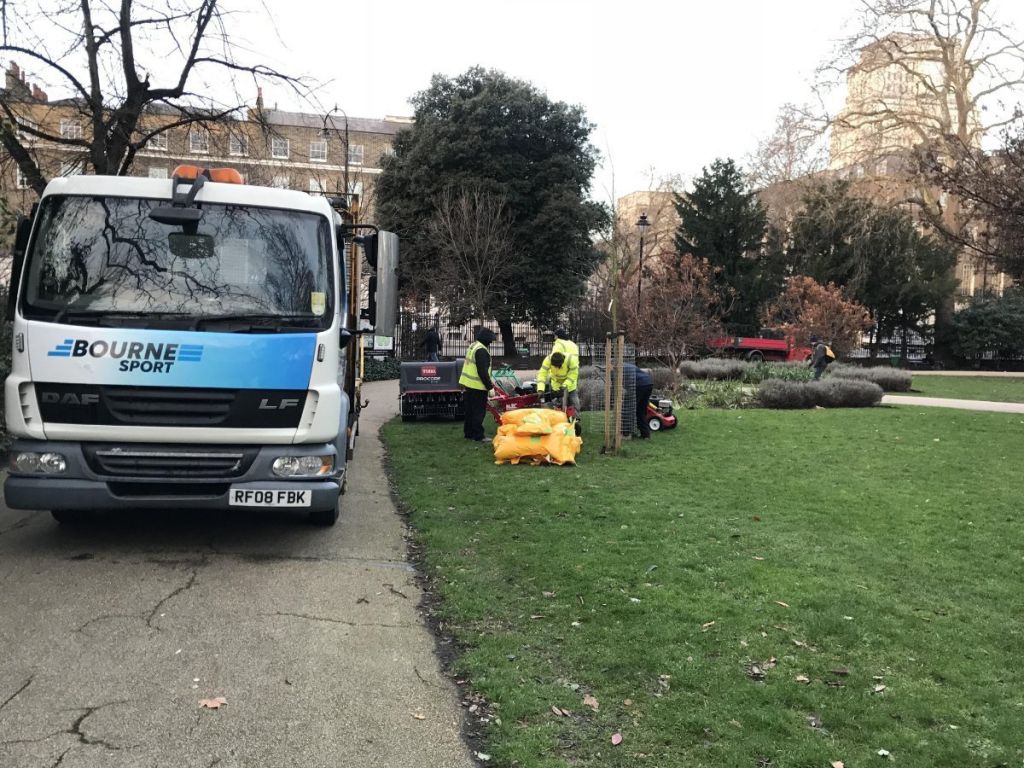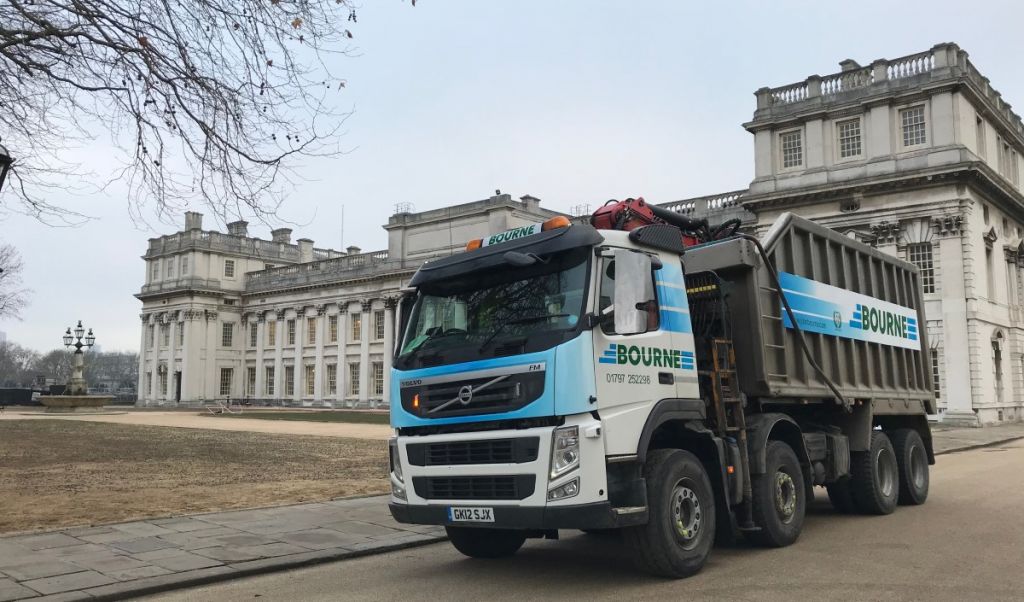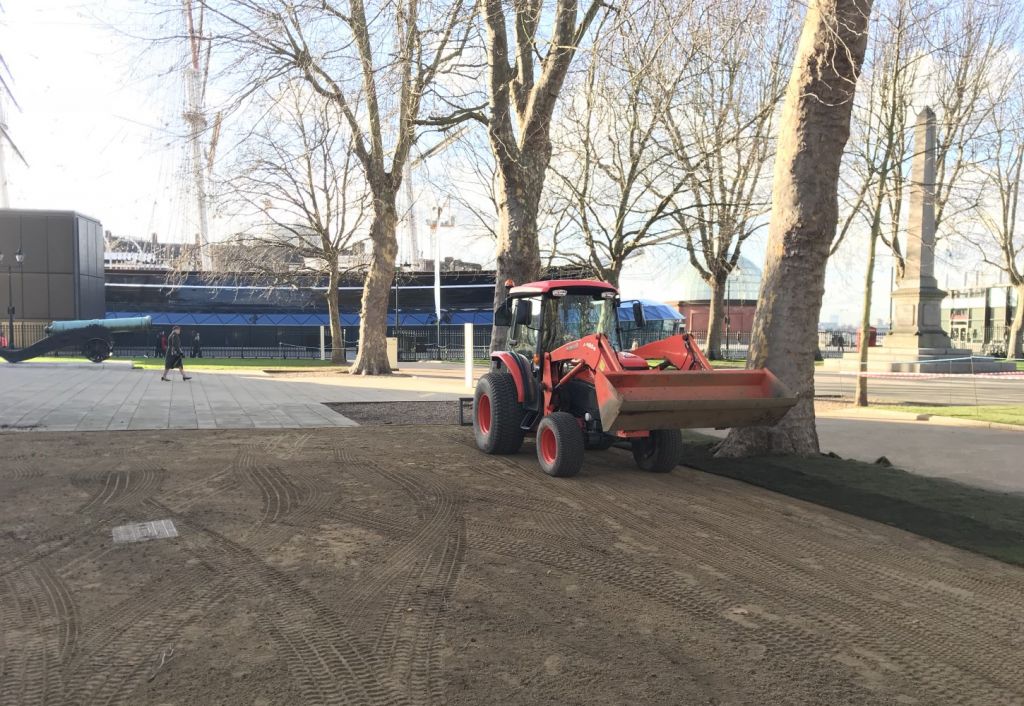Report from Sevenoaks

Here you can see Sevenoaks Town Chairman Paul Lansdale (centre) and Coach Micky Collins (right) studying a sample of hybrid carpet under the careful supervision of Steve Wilcockson. A picture that summarises our first 3G and hybrid evening quite well!
The evening was a great success, thanks to the gracious hosting and lovely facilities of Sevenoaks Town FC, and the interesting and wide-ranging presentations by our speakers. Paul Lansdale gave an engaging outline of how he found £500,000 for the club from local resources; Karen Woolland of WCTD explained what you need to think of when raising funds in general and especially from public bodies; Steve Wilcockson from Surfacing Standards Limited presented the role of a specialist consultant throughout the decision-making and implementation process; and last but not least, Rob de Heer of Sports Pitch Engineering explained the benefits of various types of hybrid sports pitches (i.e., natural grass reinforced in various ways with artificial fibre).
The club catering was good and warming - just what was needed for a very chilly February evening. (The only slight disappointment for some of us older team members was that the ale was off so we had to be content with lager. Oh well, if that's our worst complaint...!) There was a lot of conversations going on in the wamth of the club-house, but eventually we did feel compelled to brave the great outdoors to have a look at the actual 3G pitch.
On site we saw the 1st XI training under the blazing floodlights on a pristine green pitch. Having had a miserably wet weekend, no doubt causing havoc to natural pitches around the South-East, we couldn't have had a better demonstration of the advantages of synthetic carpets. It was cold but enjoyable and cheerful conversations were held all around the pitch.
The evening was rounded off with a penalty shoot-out, ultimately won by Robert Johnston of Hatko, who received the winner's well-deserved bottle of bubbly!




